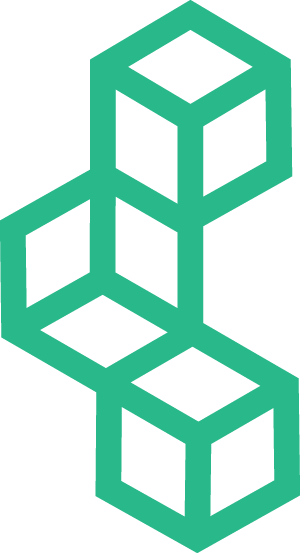Celebrating International Women's Day with five women who disrupted the Tech Industry and Inspiring Women to Shape the Future of Tech
At Intellis, the future of tech should include people of every color, gender, belief, origin, and community. The end of tech should be accessible, flexible, and inclusive. This vision aligns with our mission to "strive for team excellence and maintain an environment that allows for continuous improvement of individuals and our organization." We are proud that 50% of our company is women!
In honor of International Women's Day and Women's History Month, we look back at women's history in tech and highlight notable women who have driven innovation and led change in the technology sector.
In the mid-twentieth century, the tech industry was dominated by women. Programming, computer design, maintenance, innovation, and even computerized "war machines," used to decrypt enemy communications, were traditionally feminized careers.
The early electronic computing industry's origins are filled with women's contributions. It is undeniable that women have left a lasting mark on the industry and continue to make essential contributions. To celebrate this rich history, we're highlighting five notable women in tech.
1. Grace Hopper, Computer Scientist and United States Navy Rear Admiral
"We're flooding people with information. We need to feed it through a processor. A human must turn information into intelligence or knowledge. We've tended to forget that no computer will ever ask a new question."
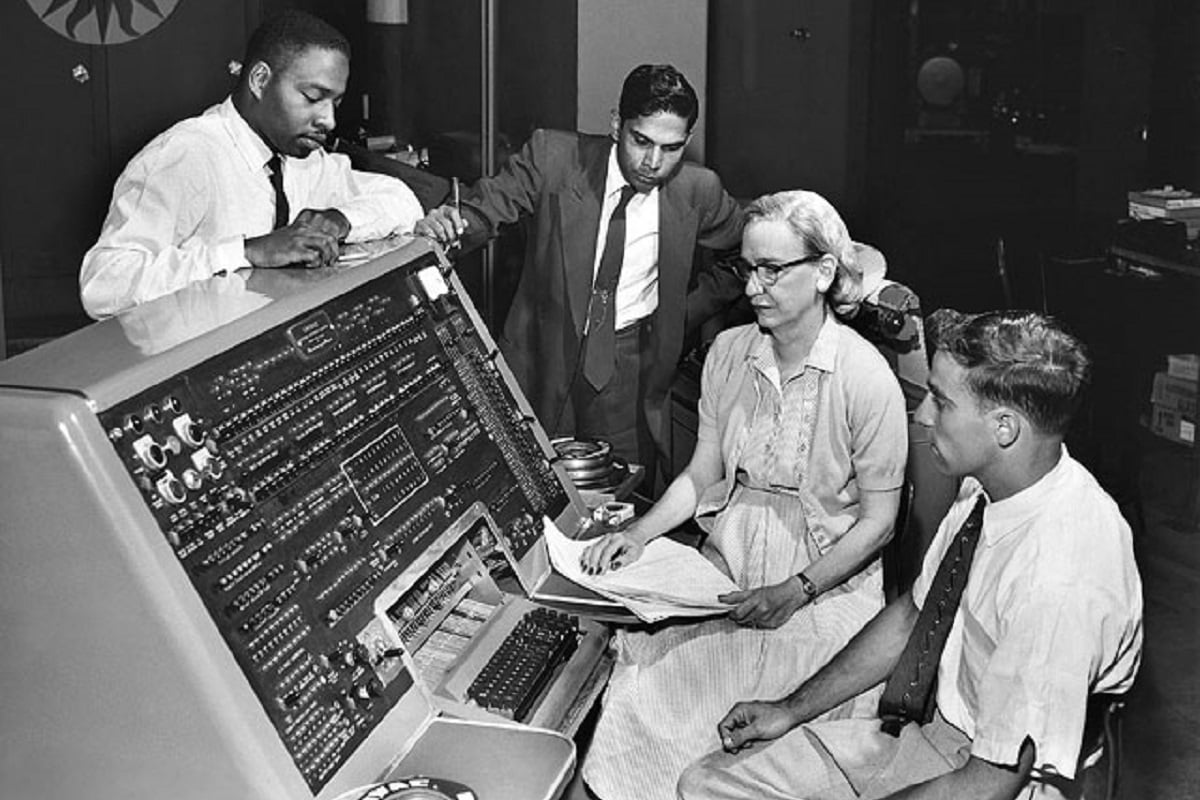
(Photo: Smithsonian Institution Neg. 83-14878).
Grace Hopper (December 9, 1906, to January 1, 1992) was a computer scientist and naval officer. She received a master's degree (1930) and a Ph.D. (1934) in mathematics from Yale. She is considered one of the first three modern "programmers" and is best known for her trailblazing contributions to developing computer languages.
She was one of the first programmers of the Harvard Mark I, the general-purpose electromechanical computer that was used in the war effort during the last part of World War II; she was a pioneer of computer programming and invented one of the first compiler-related tools, a translator-like program that transforms computer code written in one programming language into another programming language.
Moreover, she popularized the idea of machine-independent programming languages, which led to the development of the Common Business-Oriented Language, COBOL, an early high-level programming language designed for business use. COBOL is still used by companies and governments in business, finance, and administrative systems.
After the war, she continued to serve in the military, rising in rank to Rear Admiral and working in the advancement of computer technology. She has received numerous accolades for her contribution to the computer sciences. Grace left an inimitable legacy as a brilliant programmer and pioneering woman in male-dominated fields.
2. Valerie Thomas, Data Scientist and Former Associate Chief of NASA Space Science Data Operations
"Strides have been made to encourage more females to consider entering the science and engineering fields. For example, there are special STEM programs in which girls are participating, books for girls about female role models, and hands-on competitions and other activities in which girls are being successful."
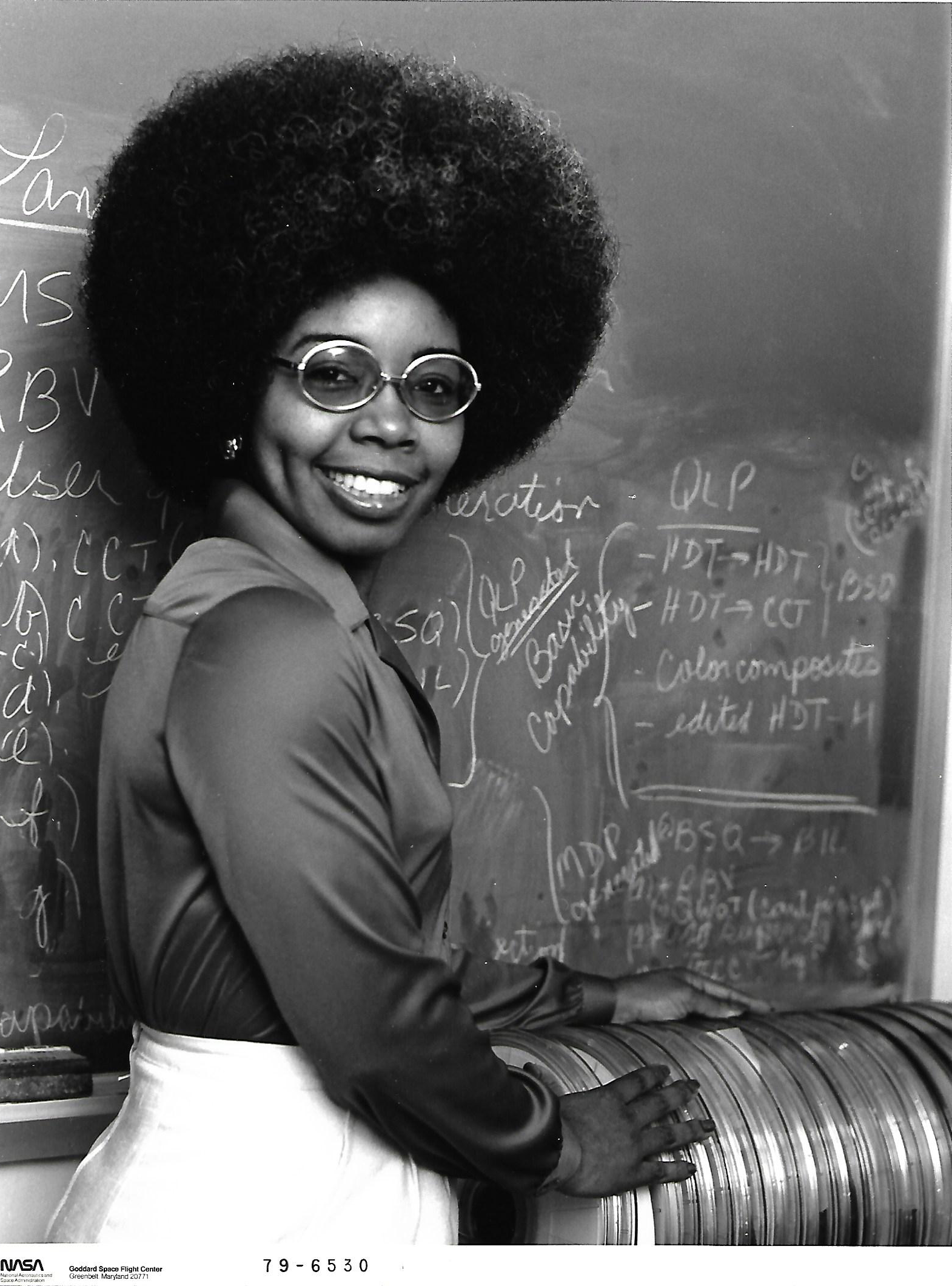
Valerie Thomas, in 1979 stood with a stack of early Landsat Computer Compatible Tapes (CCTs). Thomas was responsible for the development of early Landsat digital media formatting. (Photo: NASA).
Valerie Thomas (February 8, 1943, to Present) is best known for inventing the illusion transmitter, for which she received a patent in 1980 during her long career at NASA. The device is still in use, and scientists are working to incorporate it into modern medicine and technology tools.
Over her 30+ year career at NASA, she managed the development of NASA's image-processing system for "Landsat," the first satellite to send images from outer space. In addition, she led a team of 50 for the Large Area Crop Inventory Experiment LACIE. LACIE was a joint effort between NASA, NOAA, and the USDA and demonstrated the ability to use space technology to predict wheat yield.
Thomas earned a degree in physics at Morgan State University as one of only two women in her class. She has received many awards, including the Goddard Flight Center Award of Merit and the NASA Equal Opportunity Medal.
3. Dame Stephanie Shirley, Information Technology Pioneer, Businesswoman, and Philanthropist
"Many people go into business to make money. I didn't; I went in with a mission for women. But, conversely, I was determined never, ever to be poor again."
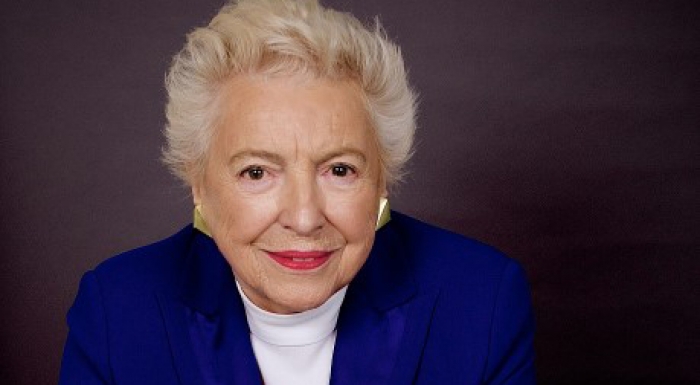
Stephanie "Steve" Shirley (September 16, 1933, to Present) is a technology pioneer who founded an innovative software company in 1962 that employed home-based women as part-time workers. She has a degree in mathematics from Sir John Cass College.
Could you listen to her inspiring TED Talk?
In the 1950s, she worked at the Post Office Research Station in the UK, building computers from scratch and writing code in machine language. She took evening classes for six years to obtain an honors degree in mathematics. While at the Post Office, she helped to develop electronic telephone exchanges and the premium bond computer "Ernie."
In 1962, she founded the software company Freelance Programmers (later FI, then Xansa, since acquired by Steria and now part of the Sopra Steria Group), with innovative work practices primarily focused on creating job opportunities for women with dependents, and she predominantly employed women.
She received her BSc in 1956 and was appointed Officer of the Order of the British Empire (OBE) in the 1980 Birthday Honors for industry services; Dame Commander of the Order of the British Empire (DBE) in the 2000 New Year Honors for services to information technology; and Member of the Order of the Companions of Honor (CH) in the 2017 Birthday Honors for services to the IT industry and philanthropy.
In 1987, she gained the Freedom of the City of London. She was President of the British Computer Society from 1989 to 1990 and Master of the IT livery company from 1992-93. In 1985, she was awarded the Recognition of Information Technology Award. In 1999 she received the Mountbatten Medal.
Stephanie retired in 1993 but has continued championing progress in the fields she loves. She supports research into autism spectrum disorders, as well as organizations that promote improving the IT industry and the role of the Internet in society.
4. Margaret Hamilton, Computer Scientist and Systems Engineer
"It quickly became clear that the software was not only informing everyone that there was a hardware-related problem, but that the software was compensating for it."
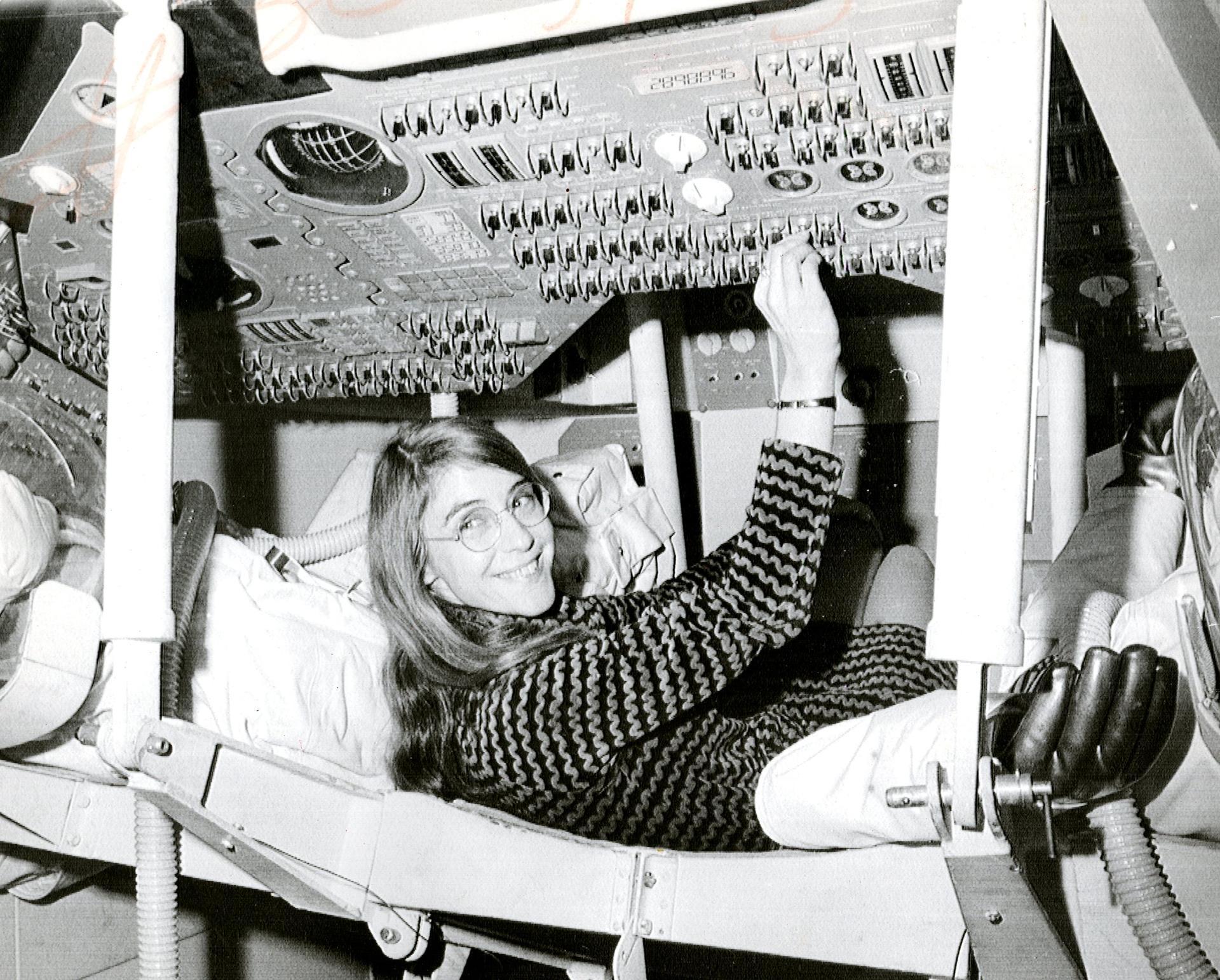
Margaret Hamilton in the Command Module. (Photo: NASA).
Margaret Hamilton (August 17, 1936, to Present) is a computer scientist and systems engineer credited with coining "software engineering." She studied mathematics at the University of Michigan and earned a BA in mathematics with a minor in philosophy from Earlham College in 1958.
In the 1960s, she worked at MIT in the meteorology department developing software that would predict weather on the LGP-30 and the PDP-1 computers. After that, she became the Director of the Software Engineering Division of the MIT Instrumentation Laboratory. She led a team of developers to design the on-board flight software for the Apollo space program. In addition, she created and developed new methods for building flight software and applied these methods to developing the Apollo and Skylab software and defining Shuttle system software requirements.
In 2016, she was awarded the Presidential Medal of Freedom by US President Barack Obama for her work leading the development of on-board flight software for NASA's Apollo Moon missions.
5. Jean Bartik Computer Programmer and Software Pioneer
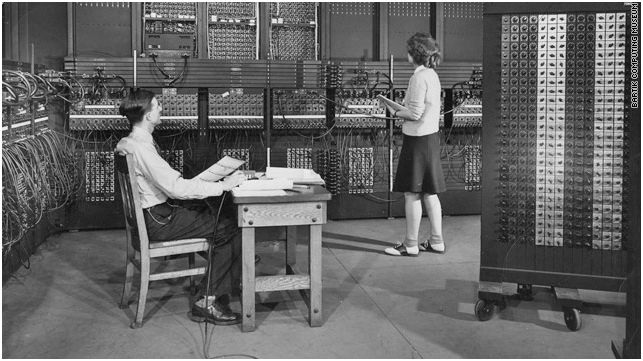
Jean Jennings Bartik (right) in 1946 with an early computer and her supervisor, Arthur Burks. (Photo: Bartik Computer Museum).
Jean Bartik (December 27, 1924, to March 23, 2011) was a computer programmer and software pioneer. She attended Northwest Missouri State Teachers College, now Northwest Missouri State University, where she majored in mathematics. She was one of the original members of the women who programmed the ENIAC, or Electronic Numerical Integrator and Computer, which is credited as the first all-electronic digital computer. For that was able to solve a large class of numerical problems through reprogramming.
The ENIAC was designed to calculate the firing trajectories of artillery shells. It was completed in 1946, too late to be used during World War II, but it was a milestone in the evolution of modern computing. She began her career at the University of Pennsylvania, manually calculating ballistics trajectories, then using the ENIAC to complete these calculations. She and her colleagues developed and codified many programming fundamentals while working on the ENIAC.
Jean went on to work at various technology companies as a writer, manager, engineer, and programmer. In 2009, She received a Pioneer Award from the IEEE Computer Society, and in 2008 she was named a fellow by the Computer History Museum in Mountain View, Calif.
___
Talk to us directly to learn more about Intellis solutions for Facility Capital Planning. Schedule a demo today!
Intellis Labs is a leading B2B software company specializing in Facility Capital Planning solutions. Our innovative enterprise solutions and services empower you to make data-driven decisions to improve facility condition assessments and Facility Capital Planning by enhancing facility performance, reducing costs, and boosting the bottom line.
With Intellis Labs, you get more than just software solutions. You get a team of experts who are committed to providing you with exceptional customer service and support.
Our solutions are intuitive, easy to use, and customizable to meet your needs. We combine cutting-edge technology with expert knowledge to deliver reliable, scalable, and secure solutions.


